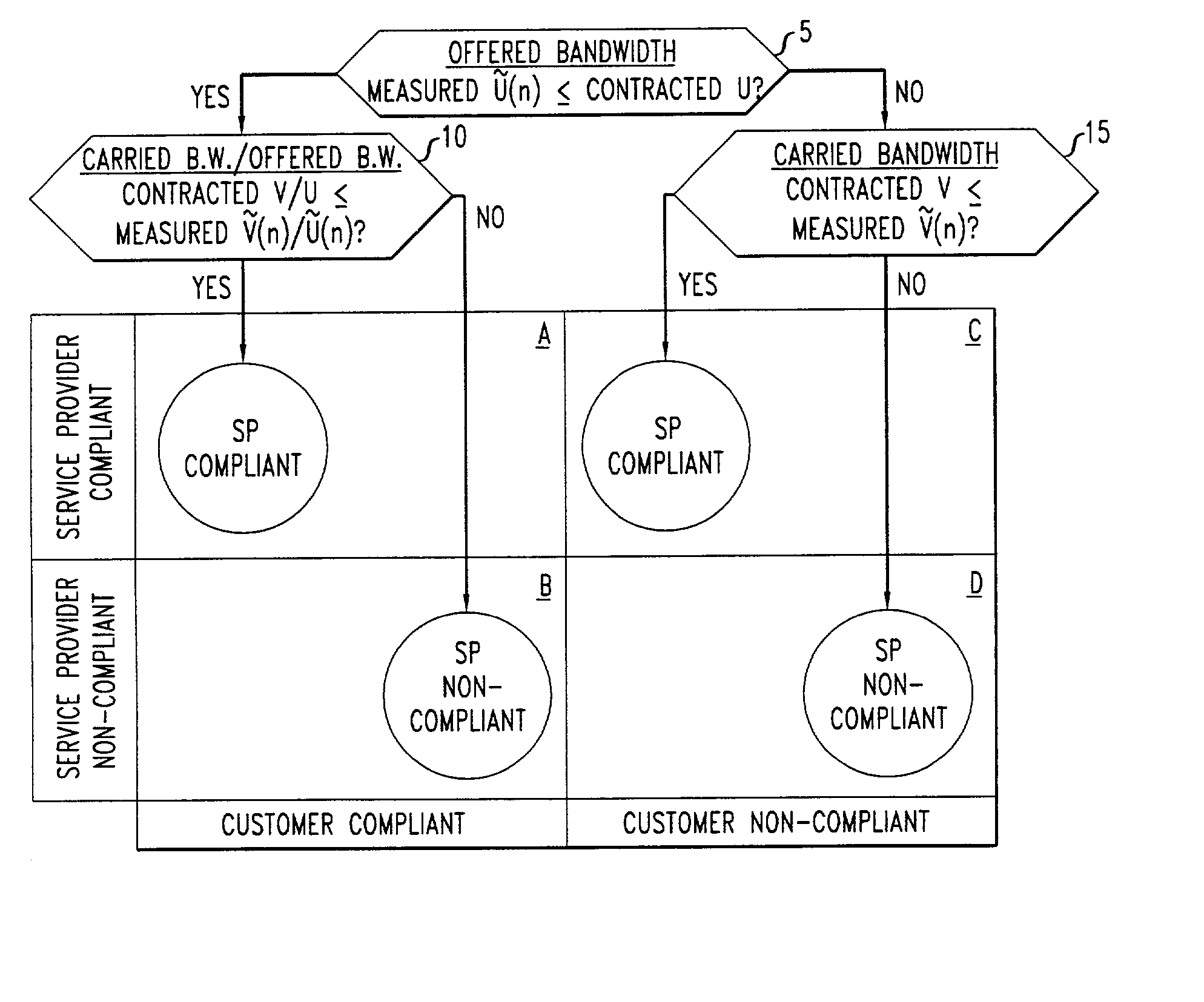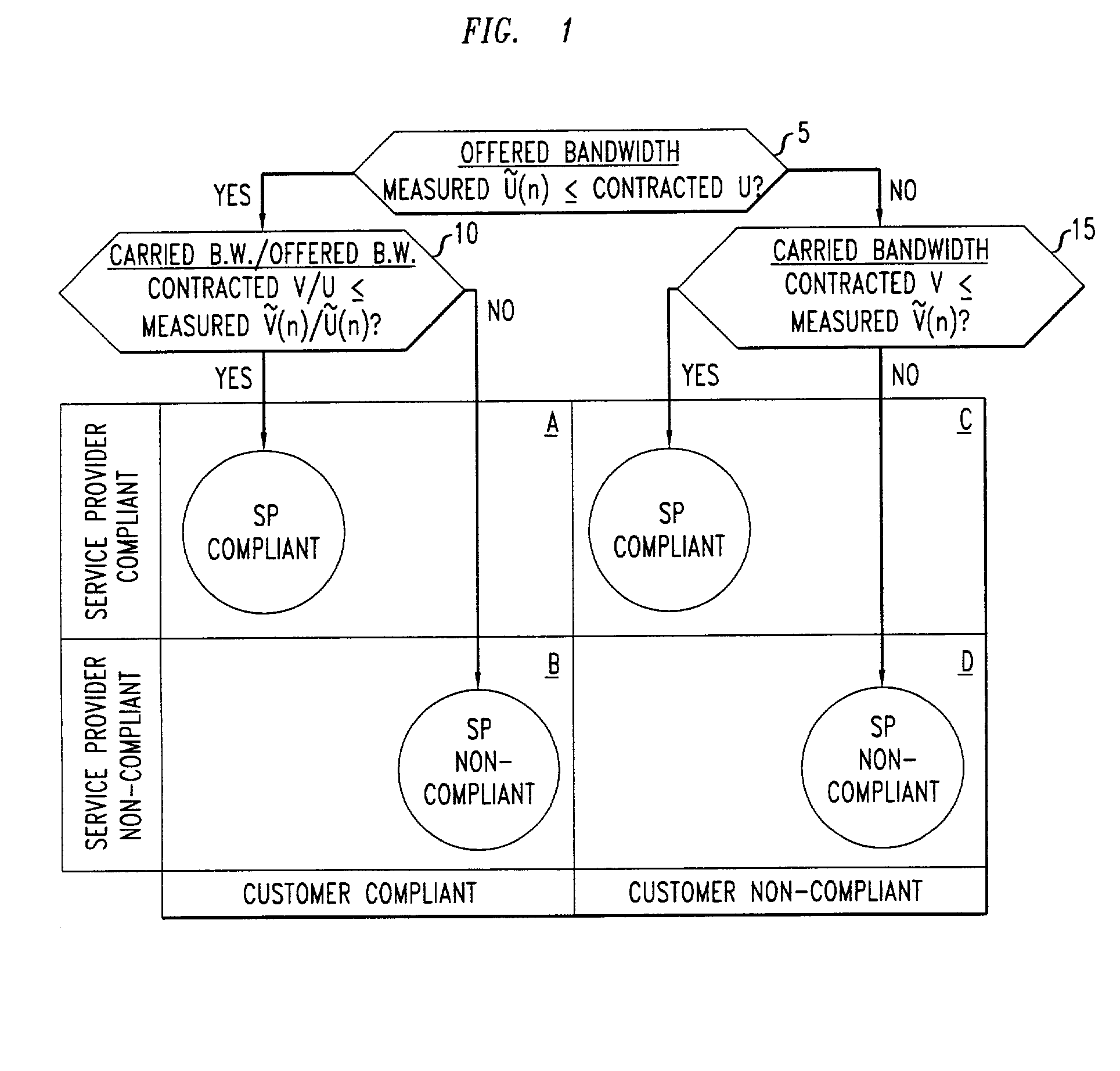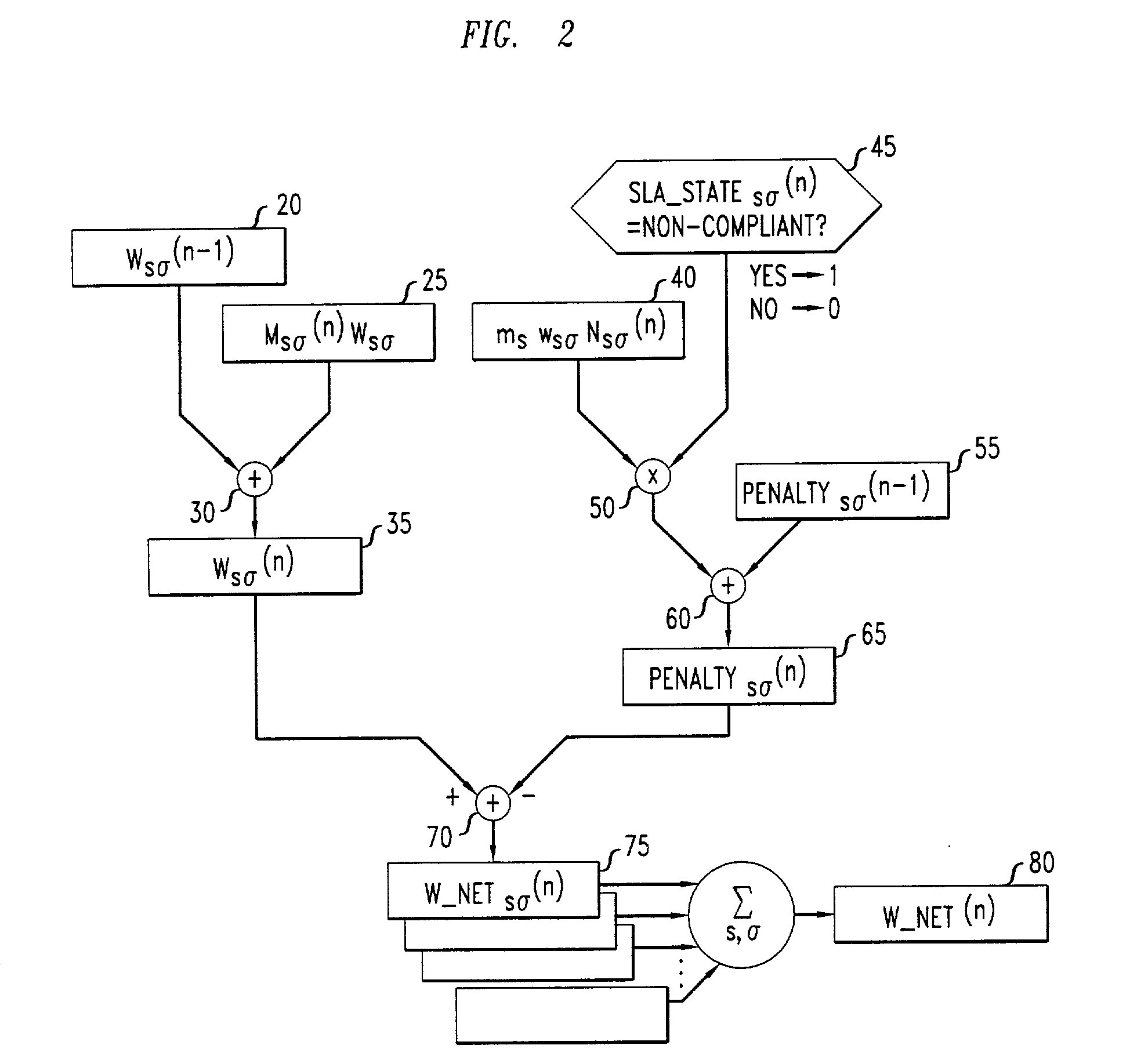Measurement-based management method for packet communication networks
a packet communication network and management method technology, applied in the field of measurement-based management methods for packet communication networks, can solve the problems of inability to respond to traffic behavior in real time, inability to consistently provide each customer with service quality, and inability to maintain the same resources
- Summary
- Abstract
- Description
- Claims
- Application Information
AI Technical Summary
Problems solved by technology
Method used
Image
Examples
Embodiment Construction
[0091] We performed a numerical case study based on a fictitious network which has eight nodes (N=8), of which 10 pairs are directly connected, as shown in FIG. 7. The network has 20 directed links (L=20), one in each direction for each connected node pair. The typical bandwidth of a directed link is OC3=155 Mbps, with the exception of the links connecting Argonne (3) and Princeton (4), and also Houston (8) and Atlanta (7), which have bandwidths of 2.times.OC3=310 Mbps. One measure of total resources in the network is 24 OC3-hops.
[0092] There are six service classes: voice, data 1, data 2, data 3, data 4, and video, indexed by s=1, 2, . . . , 6, respectively. The effective bandwidths of individual flows of these classes are d.sub.s=16, 48, 64, 96, 384 and 640 Kbps. Voice (s=1) and video (s=6) are delay sensitive service classes, and their admissible route sets R (s, .sigma.) consist only of routes with the minimum number of hops. There are a total of 68 routes for each of these two ...
PUM
 Login to View More
Login to View More Abstract
Description
Claims
Application Information
 Login to View More
Login to View More - R&D
- Intellectual Property
- Life Sciences
- Materials
- Tech Scout
- Unparalleled Data Quality
- Higher Quality Content
- 60% Fewer Hallucinations
Browse by: Latest US Patents, China's latest patents, Technical Efficacy Thesaurus, Application Domain, Technology Topic, Popular Technical Reports.
© 2025 PatSnap. All rights reserved.Legal|Privacy policy|Modern Slavery Act Transparency Statement|Sitemap|About US| Contact US: help@patsnap.com



